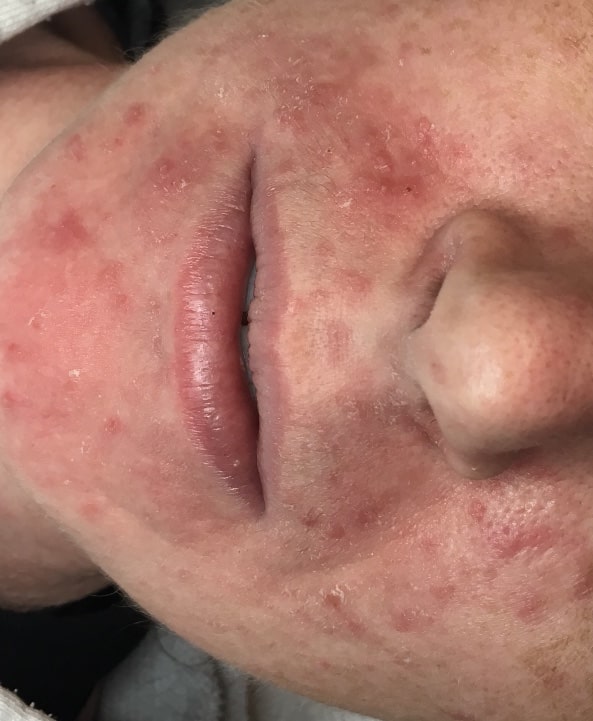When it comes to rosacea, there’s a huge range of severity this condition can manifest in. While some people might only notice an odd bump or bright patch, others have a much more painful and difficult time with this stubborn condition.
Frequently combined with sensitive, reactive skin, rosacea can wreak havoc in day-to-day activities. Are you at your wits’ end about making your rosacea more manageable? Our expert Skin Therapists have the tools and answers.
Rosacea is a common, chronic skin disorder affecting the skin of the face. It is an episodic condition known for flareups and can be triggered by a variety of other diseases or situations.
Rosacea is frequently linked to an increased presence of Demodex mites, tiny organisms living in the hair follicle wall. Changes in the skin brought on by environmental changes, stress, or consumption of certain foods (resulting in changes to gut balance) sometimes allow the population of Demodex mites to soar. They attack peripheral capillaries, and this action triggers an immune reaction, causing redness and inflammation of the skin.
Rosacea typically presents as acne-like bumps, red or pink patches of dry, inflamed skin and dilated capillaries. It is often uncomfortable or even painful, with the discomfort ranging from itching, stabbing pain, to burning sensation and flushing feeling.
While it is not known why some people have Demodex mite and others don’t, we know that gut health plays a massive role in rosacea. An overgrowth of bad bacteria in the gut can be very evident on the skin as our skin is an excretory organ.
Therefore, the treatment of rosacea focuses on killing the harmful bacteria living within the skin and gut alike. This eases the pressure off the peripheral capillaries, further reducing the skin inflammation, irritation and redness. It is also essential to strengthen the skin barrier and making it much more resilient through a series of specialised treatments.
There is many factors that can trigger or worsen rosacea by dilating blood vessels and therefore increasing blood flow to the surface of the skin. These include:

A Facial Imaging Skin Assessment is an essential first step in your skin correction journey. That’s why we offer a complimentary skin consultation with your first skin treatment.


 by BAB Design Studio.
by BAB Design Studio.
